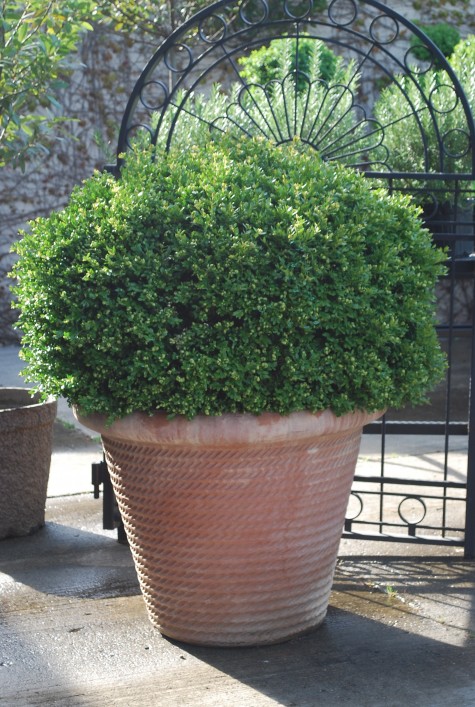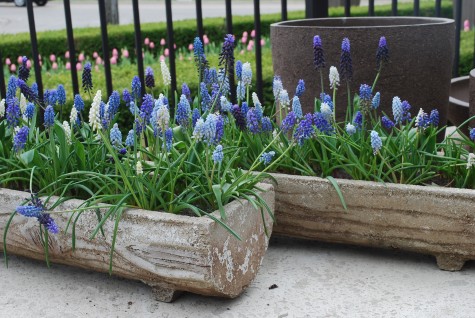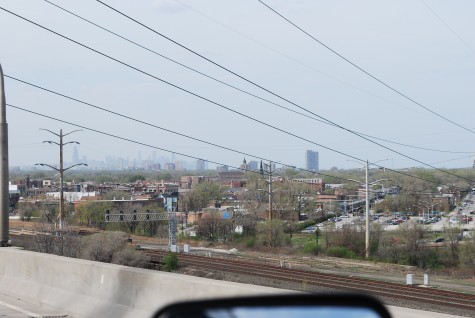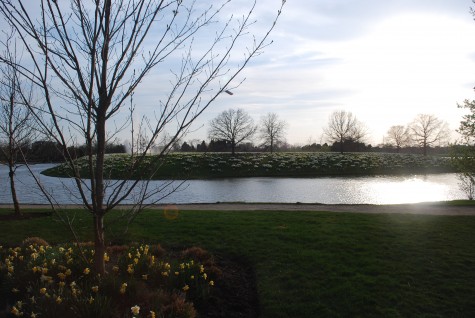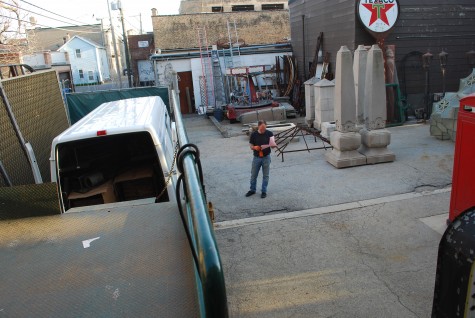
My yellow magnolias are close to being in full bloom. Barring some disastrous overnight temperatures, they ought to be glorious in a few days. The weather we have had the past month has been so unusual; I keep thinking it is May, not mid April. In celebration of the mild spring, so many things are blooming all at once. Cherries, crabs, magnolia, PJM rhododendron, Bradford pears-there is quite the symphony going on. I know I am preaching to the choir to suggest there is no other time in a garden quite like spring, but I like encouraging people to look around them at a time when there is plenty to reward the seeing.
 This crabapple is just coming into bloom-not so often do I see it flower in tandem with the forsythia. This is the weather jam at work. We are having much cooler temperatures at night now than we did some weeks ago. When spring is good, it is very very good; everything in flower is going into the cooler at night. This plays such a big role in a spring being of generous duration. I doubt I would put pink and yellow together like this; I would guess the township or county planted this traffic island a long time ago. But I am fine with rowdy and exuberant in the spring; this display seems entirely appropriate for the season.
This crabapple is just coming into bloom-not so often do I see it flower in tandem with the forsythia. This is the weather jam at work. We are having much cooler temperatures at night now than we did some weeks ago. When spring is good, it is very very good; everything in flower is going into the cooler at night. This plays such a big role in a spring being of generous duration. I doubt I would put pink and yellow together like this; I would guess the township or county planted this traffic island a long time ago. But I am fine with rowdy and exuberant in the spring; this display seems entirely appropriate for the season.
 There are lots of little spring things that warrant attention. This Matrix blue frost pansy mix is stellar. They look like each basic white flower has been individually dressed up in purple watercolor. It is a much more subtle look than a picotee, or variegated flower. I am convinced that the most valuable tool a gardener has at their disposal is the ability to envision. There are different kinds of seeing. Many things in my environment I see, but don’t see with understanding, appreciation, inspiration or thoughtfulness; this kind of seeing takes effort.
There are lots of little spring things that warrant attention. This Matrix blue frost pansy mix is stellar. They look like each basic white flower has been individually dressed up in purple watercolor. It is a much more subtle look than a picotee, or variegated flower. I am convinced that the most valuable tool a gardener has at their disposal is the ability to envision. There are different kinds of seeing. Many things in my environment I see, but don’t see with understanding, appreciation, inspiration or thoughtfulness; this kind of seeing takes effort.
The surfaces of these two pots play off one another; the shiny glaze is in distinct contrast to the rough creamy clay. The yellows and limes seem all the more limey, given the purple pansies. Massing a dark color, and placing it in front of a light color greatly adds to its visual impact. The warm brown of the fountain is repeated in the centerpiece of the glazed pots. The flower colors pop all the more, being placed with a group of objects. No composition comes with a handbook. It is a matter of taking the time to see what is there to be seen.
 These flamed tulips are hard to miss, but none the less I have watched them sprout, bud, bloom, and mature. The flowers opened a creamy yellow; it has taken a week or more for that cream base to go white. Anyone thinking of planting white tulips for a spring wedding reception needs to choose the variety carefully, and study the timing. I try to keep track of what blooms when for exactly this reason. Even so, spring weather can be so variable your best laid plans could make your tulips too early, or too late. The visual idea here-white enlivens and intensifies the appearance of other colors. If you plant tulips against a brick or stucco or stone surface, consider the color combination-it will be much more important than each color individually.
These flamed tulips are hard to miss, but none the less I have watched them sprout, bud, bloom, and mature. The flowers opened a creamy yellow; it has taken a week or more for that cream base to go white. Anyone thinking of planting white tulips for a spring wedding reception needs to choose the variety carefully, and study the timing. I try to keep track of what blooms when for exactly this reason. Even so, spring weather can be so variable your best laid plans could make your tulips too early, or too late. The visual idea here-white enlivens and intensifies the appearance of other colors. If you plant tulips against a brick or stucco or stone surface, consider the color combination-it will be much more important than each color individually.
 This planting in a old galvanized pan is one of Rob’s one act plays. The hyacinth bulbs are barely showing bud; he likes every stage of the development of a hyacinth bloom-not just the flower part. The alyssum in full bloom gives those green leaves visually contrasting company. Though the time will come that the hyacinths fade, its short life is still very sweet. I am always amused when a client tells me they will not plant whatever-say lilacs-as the blooming is short. Most things in nature are a one act play of one sort or another. The blooming of the maples-almost over for this year.
This planting in a old galvanized pan is one of Rob’s one act plays. The hyacinth bulbs are barely showing bud; he likes every stage of the development of a hyacinth bloom-not just the flower part. The alyssum in full bloom gives those green leaves visually contrasting company. Though the time will come that the hyacinths fade, its short life is still very sweet. I am always amused when a client tells me they will not plant whatever-say lilacs-as the blooming is short. Most things in nature are a one act play of one sort or another. The blooming of the maples-almost over for this year.
 My hellebores are long lived, and have only gotten better with time. Their flowers emerge, mature and fade over many weeks; each stage has its charms. At this stage, exquisite.
My hellebores are long lived, and have only gotten better with time. Their flowers emerge, mature and fade over many weeks; each stage has its charms. At this stage, exquisite.

These aging clumps of Helleborus “Ivory Prince” I would not describe as exquisite-they are interesting in a moody , fugue-like way. I like them at this very mature stage just as much as I like them young.
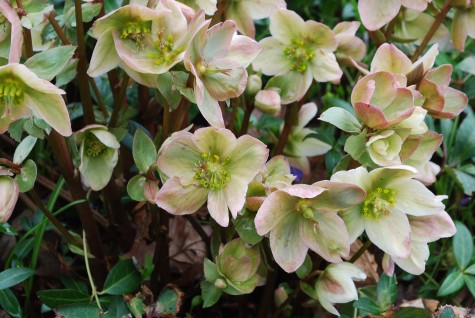
It would be easy to walk by this hellebore stage act without truly seeing it. As I am very busy with work this time of year, it is even easier to skip the seeing. But I am indeed all the poorer when I miss what is going on right in front of me.
Bloomin’ beautiful.
And more bloomin’ beautiful.




